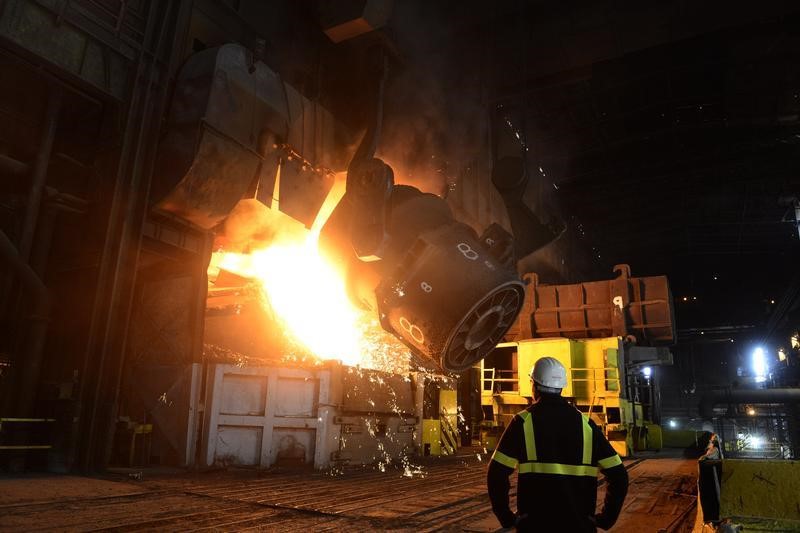(Repeats with no changes to text)
--Clyde Russell is a Reuters columnist. The views expressed are his own.--
By Clyde Russell
LAUNCESTON, Australia, Aug 3 (Reuters) - One of the more fanciful notions from the recent rally in iron ore prices is that the steel-making ingredient is now back in a bull market.
Asian spot iron ore .IO62-CNI=SI does meet the technical definition of being in a bull market, having gained 25.4 percent between its record low of $44.10 a tonne on July 8 and the close of $55.30 on July 29.
Markets are said to be in a bull phase when the rally exceeds 20 percent, likewise they are in a bear period when the decline is greater than 20 percent.
Traders are more likely to talk about dead cat bounces than bull runs where iron ore is concerned, and the fact remains that despite the price rally, iron ore remains down 25.7 percent so far this year and is barely a quarter of what it was at its all-time high in early 2011.
The recent gain in spot prices is actually the second technical bull market already this year, following the 40 percent jump between the low of $46.70 a tonne on April 2 and the peak of $65.40 on June 11.
It's probably the case that the recent rally in prices will fizzle on the harsh reality of a massively oversupplied market and stagnant steel output in China, the buyer of about two-thirds of global seaborne iron ore.
It's also worth noting that the so-called bull market was nowhere near as clear in the main iron ore derivative markets in Dalian and Singapore.
Front-month Dalian futures DCIOcv1 gained only 9.6 percent between July 8 and the close of 369.5 yuan ($59.60) a tonne on July 30, while Singapore Exchange iron ore swaps SGXIOSc1 rallied 12 percent over the same period.
These contracts are the primary ways for investors to trade iron ore in Asia, and their more modest gains probably show a lack of conviction about the sustainability of the rally in the spot price.
IRON ORE BECOMING LIKE OIL
However, the mere fact that it was worth reporting that iron ore is in a technical bull market shows how much the market has changed, and in a relatively short time.
The spot price assessment became publicly available in the last quarter of 2008, Singapore swaps started life in 2009 and the Dalian contract only dates back to October 2013.
After a typically slow start for new derivatives, volumes have grown dramatically, with the Singapore Exchange expected to trade about 1 billion tonnes this year, exceeding the physical amount China imports for the first time.
Dalian's volumes are now typically over 2 million contracts traded daily, which reflects the day-trading nature of the exchange.
However, open interest has been steadily growing and on July 31 it stood at 976,308 contracts of 100 tonnes each, up from 610,012 as of the end of January this year.
While this still pales in comparison to a long-established market such as ICE Brent crude, which has 324,160 open contracts as of July 31 representing some 324 million barrels of oil, it does show that iron ore is growing up as a financial market.
What this means is that its behaviour is likely to change over time, with volatility increasing and periods of time when futures pricing diverges from fundamentals and is driven by factors such as sentiment and media reports.
Iron ore will also become more susceptible to flash movements, with some traders looking to exploit periods of low intraday liquidity to move prices rapidly in their desired direction with the aim of triggering stop-loss positions.
In other words, it will become more like oil, and will thus require a different mindset from many of the players more used to the way things were in iron ore for decades, when prices were opaque and settled in smoky backrooms between miners and steel mills. (Editing by Himani Sarkar)
